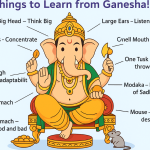In today’s business world, selling isn’t about pitching — it’s about understanding.
Whether you’re a founder, freelancer, or sales leader, success depends on your ability to ask questions that reveal real pain points and help customers discover their own reasons to buy.
That’s the power of SPIN Selling — a proven method to transform your conversations from transactional to transformational.
What is SPIN Selling?
SPIN Selling is a consultative sales framework developed by Neil Rackham, based on 12 years of research on 35,000+ sales calls. It helps sales professionals uncover customer needs through four types of questions:
👉 S – Situation, P – Problem, I – Implication, N – Need-Payoff.
The 4 Stages of SPIN Selling
🧭 1️⃣ Situation Questions
These help you understand the buyer’s current context.
Think of them as setting the stage.
💬 “Can you walk me through how your current process works?”
💬 “What tools or systems are you currently using?”
Goal: Gather insights without overwhelming your prospect.
👉 Tip: Don’t overdo situation questions — do your research first.
⚡ 2️⃣ Problem Questions
Here’s where you start identifying pain points.
You help the buyer express frustrations they may have normalized.
💬 “What challenges do you face with your current system?”
💬 “Where do delays or inefficiencies usually occur?”
Goal: Turn symptoms into specific problems.
👉 Great sellers don’t sell solutions — they clarify problems.
🔥 3️⃣ Implication Questions
Now the real magic happens.
You help the buyer understand the consequences of not solving the problem.
💬 “How does that delay affect your team’s productivity?”
💬 “What happens to your costs when that issue occurs every quarter?”
Goal: Make the pain visible and urgent.
👉 Implication questions transform interest into motivation.
💎 4️⃣ Need-Payoff Questions
Finally, you help the buyer visualize the reward of solving the problem.
💬 “If you could automate that process, how would it impact your results?”
💬 “What would it mean for your team if they saved that extra time weekly?”
Goal: Shift focus from problem to potential.
👉 At this stage, customers sell themselves on the value.
SPIN vs. Traditional Selling
| Aspect | Traditional Sales | SPIN Selling |
|---|---|---|
| Focus | Product | Customer’s world |
| Approach | Telling | Asking |
| Value | Features | Problem-solving |
| Outcome | Pressure to close | Partnership & trust |
SPIN replaces persuasion with curiosity and empathy — the two traits modern buyers respond to most.
How to Apply SPIN in Daily Work
✅ For Salespeople: Use SPIN to structure discovery calls.
✅ For Entrepreneurs: Apply it when pitching investors or clients.
✅ For Managers: Use SPIN in team problem-solving sessions.
✅ For Creators: Use it to understand audience pain points before launching products.
💡 SPIN isn’t just a sales method — it’s a communication mindset.
Common Mistakes to Avoid
🚫 Asking too many “situation” questions.
🚫 Jumping to pitch before clarifying implications.
🚫 Treating SPIN like a script instead of a natural conversation.
🚫 Ignoring emotional triggers — humans don’t buy logic; they buy relief.
Conclusion
SPIN Selling isn’t about closing harder — it’s about listening deeper.
When you master SPIN, your customers feel understood, not sold to.
And when people feel understood, they buy with confidence.
✨ Remember:
“Great salespeople don’t create demand — they uncover it.
Have you ever used SPIN Selling in your business or team discussions?
💬 Share your favorite “implication” question — the one that always unlocks the real conversation.
#SPINSelling #SalesFramework #ConsultativeSelling
#GrowthMindset #SalesStrategy #BusinessDevelopment #Leadership
Leave a comment
Your email address will not be published. Email is optional. Required fields are marked *











